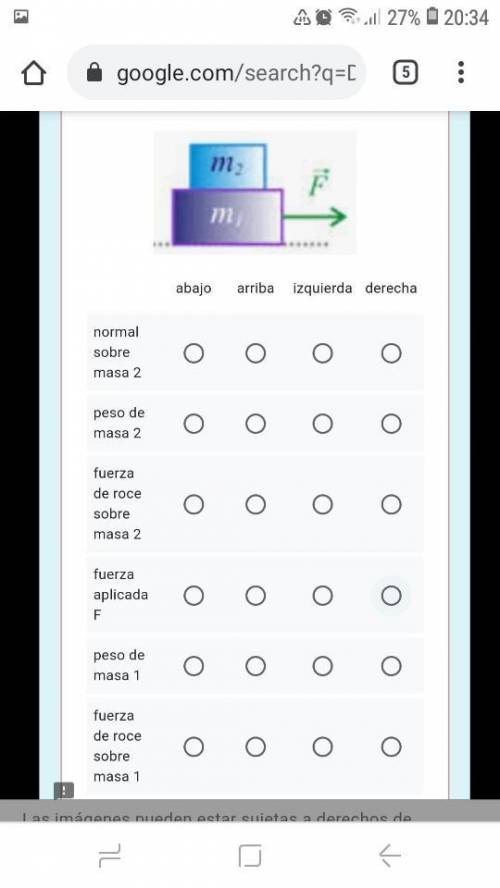
Physics, 30.05.2021 03:50 avagymnast421
Determinar hacia dónde apuntan las fuerzas que actúan sobre las masas de la figura. Marcar las casillas adecuadas según corresponda, todas las superficies son rugosas y ambas masas se tienden a mover hacia la derecha en conjunto.


Answers: 1


Another question on Physics

Physics, 22.06.2019 00:00
(science)study the following ocean currents map. an ocean currents map is shown. on the map the locations for san diego, california and savannah, georgia are marked. there is a looping current from the north past san diego and a looping current from the south near savannah which statement is most likely correct about the average temperatures in san diego, california as compared to savannah, georgia? it is higher in savannah because of the cool ocean currents from the south. it is higher in savannah because of the warm ocean currents from the north. it is lower in san diego because of the warm ocean currents from the south. it is lower in san diego because of the cool ocean currents from the north.
Answers: 2

Physics, 22.06.2019 17:50
Two identical stars with mass m orbit around their center of mass. each orbit is circular and has radius r, so that the two stars are always on opposite sides of the circle. (a) find the gravitational force of one star on the other. (b) find the orbital speed of each star and the period of the orbit. (c) how much energy would be required to separate the two stars to infinity?
Answers: 1

Physics, 22.06.2019 18:50
An insulated thermos contains 148 g of water at 72.7 ˚c. you put in a 11.7 g ice cube at 0.00 ˚c to form a system of ice + original water. the specific heat of liquid water is 4190 j/kg•k; and the heat of fusion of water is 333 kj/kg. what is the net entropy change of the system from then until the system reaches the final (equilibrium) temperature?
Answers: 2

Physics, 22.06.2019 20:30
Aball is thrown from the top of a building with an initial velocity of 21.9 m/s straight upward, at an initial height of 51.6 m above the ground. the ball just misses the edge of the roof on its way down, as shown in the figure. (a) determine the time needed for the ball to reach its maximum height. (b) determine the maximum height. (c) determine the time needed for the ball to return to the height from which it was thrown, and the velocity of the ball at that instant. (d) determine the time needed for the ball to reach the ground. (e) determine the velocity and position of the ball at t = 5.35 s.
Answers: 1
You know the right answer?
Determinar hacia dónde apuntan las fuerzas que actúan sobre las masas de la figura. Marcar las casil...
Questions

English, 29.11.2019 13:31

Mathematics, 29.11.2019 13:31

Mathematics, 29.11.2019 13:31

History, 29.11.2019 13:31

English, 29.11.2019 13:31


Mathematics, 29.11.2019 13:31



Mathematics, 29.11.2019 13:31

Geography, 29.11.2019 13:31

Mathematics, 29.11.2019 13:31


Mathematics, 29.11.2019 13:31





History, 29.11.2019 13:31

Mathematics, 29.11.2019 13:31



